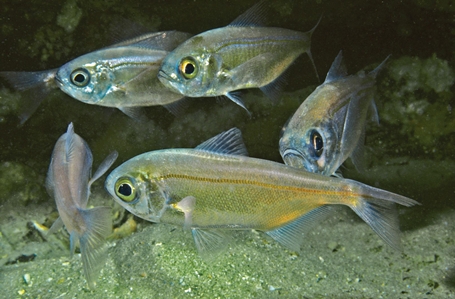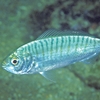General Description
Body moderately deep, compressed, rear half tapering to a narrow tail base; dorsal fin short-based, anal fin long-based, scales absent from fin base; eyes large; scales small, firmly attached, pelvic fins not reaching anus. Greyish or brownish above covered in tiny black spots, lighter below. To 13 cm.
Biology
These small fishes form schools and feed on tiny crustaceans. They are taken as bycatch in trawls.
Habitat
Coastal reefs during the day and nearby sandy areas at night, in depths of 1-70 m.
Reefs
Soft substrates
Distribution guide
Southern Australia.
Species Group
Depth
Shallow (1-30 m)
Deep ( > 30 m)
Water Column
Max Size
13 cm
Commercial Species
No
Global Dispersal
Native to Australia
Conservation Status
- DSE Advisory List : Not listed
- EPBC Act 1999 : Not listed
- IUCN Red List : Not listed





